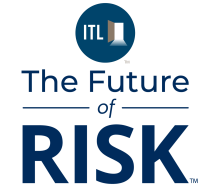For insurance providers, collaboration tools are no longer just a support function— they're a mission-critical capability. Whether managing underwriting decisions, coordinating claims, responding to regulatory inquiries, investigating potential fraud, or responding to cyber incidents, insurers must collaborate in real time, across teams, and with full confidence in data security and compliance.
However, many organizations rely on outdated systems or off-the-shelf communication tools that were never designed for the complexity and regulatory rigor of the insurance industry. This results in operational silos, inefficiencies, and increased exposure to compliance risks.
A Perfect Storm of Compliance, Complexity, and Communication Gaps
As the insurance industry accelerates its digital transformation, the need for streamlined, coordinated collaboration has become more urgent – and more complicated. Insurers must find ways to bridge teams and geographies while preserving centralized oversight, transparency, and trust in how information is shared.
Handling vast volumes of sensitive data and adhering to regulations like FINRA, HIPAA, and GDPR requires more than just reliable messaging; it demands secure platforms purpose-built for transparency, data governance, and compliance. Yet many off-the-shelf tools were not built with the specific needs of regulated industries in mind.
These platforms may support quick chats and ad hoc meetings, but they fall short when it comes to protracted, multi-stakeholder collaboration. Conversations can become fragmented, key decisions get buried, and critical actions are missed, all of which undermine response times and create compliance gaps. Retrieving information for audits or litigation becomes time-consuming and unreliable.
Compounding the issue is the challenge of secure integration. Insurers need real-time access to critical data – capabilities that off-the-shelf platforms rarely deliver.
Meanwhile, insurers' tools remain attractive targets for cyber attackers. Persistent login sessions, high user volumes, and weak security controls expose insurers to threats such as phishing, malware, data breaches, and credential theft.
Best Practices for Secure and Scalable Collaboration
To meet the demands of today's insurance industry, collaboration platforms must go beyond messaging. They must break down silos, facilitate secure real-time decision making, ensure audit readiness, and boost operational efficiencies.
Below are six things to consider when evaluating secure, flexible collaboration solutions for insurance environments.
1. Self-sovereign secure data management
To reduce risk, any platform must be built with enterprise-grade security, privacy, and compliance architecture and practices.
Key questions to ask:
- Is data always stored in environments under your direct control, whether on-premises or in a private cloud? This is essential for maintaining data sovereignty, especially when handling sensitive customer or financial data.
- Does the provider enable compliance with GDPR, HIPAA, and FINRA standards?
- Can data be easily exported for compliance purposes?
- What identity and access controls are in place? Look for multi-factor authentication, session duration configuration, role-based access control, SAML-based single sign-on, enterprise mobile management, and more.
- Is data encrypted at rest and in transit?
2. Integrated capabilities
To prevent information silos and inefficiencies, the right platform must combine messaging, task management, and documentation into a single platform. This eliminates the need for toggling between tools and enables faster, more consistent execution of critical processes such as incident response or claims investigations.
3. Dedicated channels for organized, auditable messages
Projects like underwriting, fraud detection, or regulatory reviews often span weeks or months. The ability to capture who did what, when, and why – across every conversation and workflow – is vital.
Rather than a single confusing and fractured thread for collaboration, look for a collaboration platform that offers channels or core communication spaces where team members can collaborate, share messages, and work together. This makes collaboration more streamlined and organized. These channels can be open to everyone, restricted to invited members only, allow one-on-one conversations, or span multiple teams.
4. Automated workflows and playbooks
Consider the automation workflows and out-of-the-box playbooks the vendor offers. These features can greatly improve efficiency, ensure consistent execution of critical tasks, reduce risk, and speed service delivery.
Playbooks make it easy to streamline and accelerate routine tasks such as claims processing, customer onboarding, policy renewals, compliance checks, and incident response.
For example, a top three bank implemented an out-of-the-box security playbook to support its incident response efforts. By following a structured process, the team was able to respond more quickly and effectively, reducing their response time from 20 minutes to just two.
5. Audit-ready architecture
Collaboration platforms should offer straightforward, reliable tools for generating compliance reports on user activity and communication. Features like audit logging are essential for capturing detailed records of user actions, system events, and potential insider threats. In addition, message data and file attachments should be easily exportable to support legal discovery, audits, and regulatory reviews.
6. Flexibility and ease of adoption
Any new tool should be intuitive for users and integrate with existing systems. This reduces training overhead and encourages adoption across business and technical teams.
Enabling Faster, Smarter, and Safer Decisions
When implemented correctly, a secure collaboration platform can become a force multiplier across the enterprise. Insurers can break down internal silos, reduce risk, and improve decision-making while ensuring full transparency and compliance.
Robust platforms can also increase resiliency. Outages happen often; a secure collaboration hub can keep teams connected and minimize business disruptions when primary chat systems go down.
The Bottom Line for Insurance Leaders
Senior executives in insurance must now ask: Are our communication systems truly compliant, resilient, and efficient enough to support the demands of our business? With the rise of secure, self-sovereign collaboration platforms, the industry has a clear path forward.






